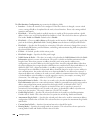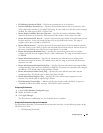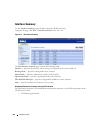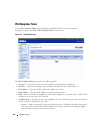
564 Configuring IPv6
•
Received Datagrams Discarded Due To MTU
— The number of input datagrams that could not be
forwarded because their size exceeded the link MTU of outgoing interface.
•
Received Datagrams Discarded Due To No Route
— The number of input datagrams discarded
because no route could be found to transmit them to their destination.
•
Received Datagrams With Unknown Protocol
— The number of locally-addressed datagrams received
successfully but discarded because of an unknown or unsupported protocol. This counter is
incremented at the interface to which these datagrams were addressed which might not be necessarily
the input interface for some of the datagrams.
•
Received Datagrams Discarded Due To Invalid Address
— The number of input datagrams discarded
because the IPv6 address in their IPv6 header's destination field was not a valid address to be received
at this entity. This count includes invalid addresses (for example, ::0) and unsupported addresses (for
example, addresses with unallocated prefixes). For entities which are not IPv6 routers and therefore do
not forward datagrams, this counter includes datagrams discarded because the destination address was
not a local address.
•
Received Datagrams Discarded Dut To Truncated Data
— The number of input datagrams discarded
because datagram frame didn't carry enough data.
•
Received Datagrams Discarded Other
— The number of input IPv6 datagrams for which no problems
were encountered to prevent their continued processing, but which were discarded (for example, for
lack of buffer space). Note that this counter does not include any datagrams discarded while awaiting
re-assembly.
•
Received Datagrams Reassembly Required
— The number of IPv6 fragments received which needed
to be reassembled at this interface. Note that this counter is incremented at the interface to which
these fragments were addressed which might not be necessarily the input interface for some of the
fragments.
•
Datagrams Successfully Reassembled
— The number of IPv6 datagrams successfully reassembled.
Note that this counter is incremented at the interface to which these datagrams were addressed which
might not be necessarily the input interface for some of the fragments.
•
Datagrams Failed To Reassemble
— The number of failures detected by the IPv6 reassembly
algorithm (for whatever reason: timed out, errors, etc.). Note that this is not necessarily a count of
discarded IPv6 fragments since some algorithms (notably the algorithm in RFC 815) can lose track of
the number of fragments by combining them as they are received. This counter is incremented at the
interface to which these fragments were addressed which might not be necessarily the input interface
for some of the fragments.
•
Datagrams Forwarded
— The number of output datagrams which this entity received and forwarded
to their final destinations. In entities which do not act as IPv6 routers, this counter includes only those
packets which were Source-Routed through this entity, and the Source-Route processing was
successful. Note that for a successfully forwarded datagram the counter of the outgoing interface is
incremented.
•
Datagrams Locally Transmitted
— The number of datagrams which this entity has successfully
transmitted from this output interface.


















